#women in ancient history
Explore tagged Tumblr posts
Text
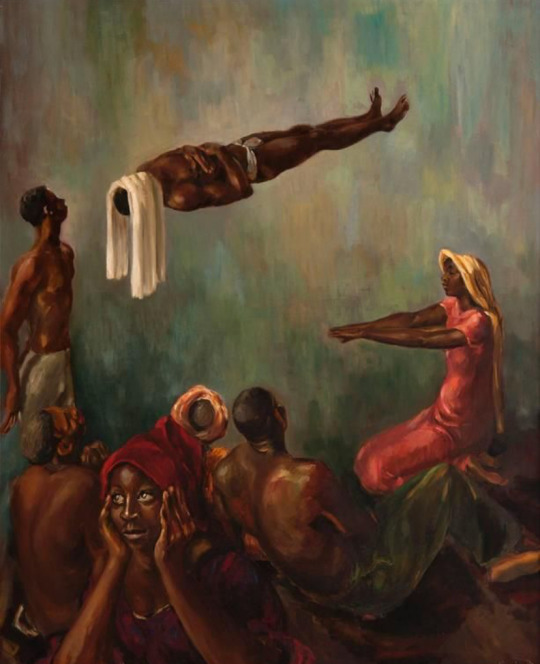





HOODOO: “If freedom don’t ring, these “roots” gonna sing!!!!”
#black spirituality#hoodoo#rootwork#ancestor veneration#vintage#black men#black women#magic#black girl magic#aesthetic#snakes#ancient egypt#juneteenth#african history#african american
2K notes
·
View notes
Text
yk what I love? that the first text we have written by a woman in England was a Roman woman inviting her best friend to her birthday
#the first words written by a woman were ones of love#she called her 'my dearest soul'#i just love women#so much#roman empire#vindolanda#hadrians wall#ancient history#history#archaeology#art history
4K notes
·
View notes
Text
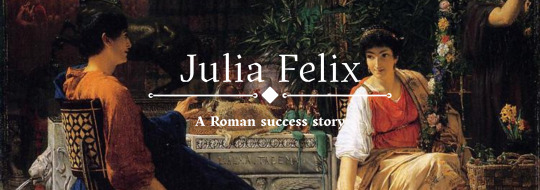
"Here’s what we know about Julia Felix: she lived in Pompeii from at least 62 CE. She was possibly illegitimate but was definitely not a member of the social and cultural elite. She worked for a living setting up and running a very interesting business and, by 79 CE, she had planned to shift her focus from managing a business to owning property. We know all these things because twentieth-century excavations at her business uncovered an advert, carved in stone and attached to the external wall of her huge building. It reads:
"To rent for the period of five years from the thirteenth day of next August to the thirteenth day of the sixth August, the Venus Bath fitted for the nogentium, shops with living quarters over the shops, apartments on the second floor located in the building of Julia Felix, daughter of Spurius. At the end of five years, the agreement is terminated."
This find illuminated the building it was attached to, bringing what otherwise looked like a very large anonymous domestic house into dazzling focus. With this description of the purpose of each room written by the owner herself, archaeologists and historians could see the site through a whole new lens and they realised that they had discovered a Roman entertainment space for the working middle classes. It is, so far, a completely unique find and it is magnificent. It offers us, as modern viewers, two amazing things: a little glimpse into the lives of the commercial classes of the Roman Empire who are so often completely and utterly invisible, and a brutal reminder that so much of what we ‘know’ about Roman women in the Roman world comes from rules concerning only the most elite.
We’ll do that second part first, because it’s the least fun. Roman written and legal sources are pretty universal in their agreement that although women could own property, they could not control it; they had no legal rights, could not make contracts and were to be treated as minors by the legal system for their entire lives. In order to buy or sell property women required a male guardian to oversee and sign off on any transactions. This is a basic truism of women in the Roman Empire, repeated ad nauseum by sources both ancient and modern including me, and it is undermined by Julia Felix’s rental notice.
The rental ad makes it pretty clear that Julia Felix is the owner-operator of a business complex including public baths, shops and apartments (there’s more too, as we’ll see), and she doesn’t seem to require anyone else to help her rent it out. She names her father – sort of; ‘Spurius’ might just mean that she is illegitimate – but this is effectively a surname, a personal identifier to differentiate her from other Julia Felixes in the area. It doesn’t mean her father was involved. Furthermore, the use of her father’s name as an identifier suggests that Julia didn’t have a husband and was either unmarried or widowed in 79 CE. The strong implication of her advert is that Julia Felix was an independent lady, a honey making money and a momma profiting dollars who could truthfully throw her hands up to Destiny’s Child.

We will never know if Julia escaped the flames and choking ash of 79 CE, fleeing as it swallowed her business and her home, but one discovery, made on 28 January 1952, suggests that she didn’t. The archaeologists, led by Amedeo Maiuri, uncovered on that day the skeleton of a woman who had fallen while running across the garden during the disaster. It’s clear this fallen woman was well off, because she was wearing a lot of gold jewellery. She carried four gold half-hoop earrings and wore four gold rings. Two of these rings were particularly expensive; both contained a red carnelian gem, one carved with a figure of Mercury, the other with an eagle. Around her neck she wore a necklace of gold filigree, dotted with ten pearls and hung with a green pendant. Someone stole both the necklace and earrings from the Pompeii Antiquarium in 1975 and no one, somehow, had ever bothered to photograph them so all we have are descriptions but the rings that survive are fine and expensive. The woman who wore them – was wearing them when she died – had real money to buy these objects and the woman who wore them did'nt leave Pompei in time.
Moreover, when she was found it was clear that at the moment of her death she was heading not towards the street or towards safety, but towards the shrine to Isis in the garden where all the most valuable possessions were kept. The valuable possessions that Julia Felix grafted for and maybe couldn’t bear to leave behind. There’s no way to tell whether this skeleton is Julia Felix, whether these bones once stood and looked at the plots of land Julia bought and made plans, or whether they belong to a looter or a chancer or someone just caught out. But it’s nice to pretend that Julia Felix, who shaped the city’s roads around her dream and offered respite and luxury to workers and made a tonne of money doing it, died and was buried with the place that still bears her name."
A Rome of One's Own: The Forgotten Women of the Roman Empire, Emma Southon
#julia felix#historyedit#history#women in history#ancient rome#pompei#businesswomen#italy#italian history#roman history#roman empire#1st century#historyblr#historical figures
712 notes
·
View notes
Text


#black culture#black history#kemetic#kemetism#ancient egypt#ancient kemet#egypt#african#african history#africa#alkebulan#blacklivesmatter#black lives matter#black excellence#black women#black people
433 notes
·
View notes
Text

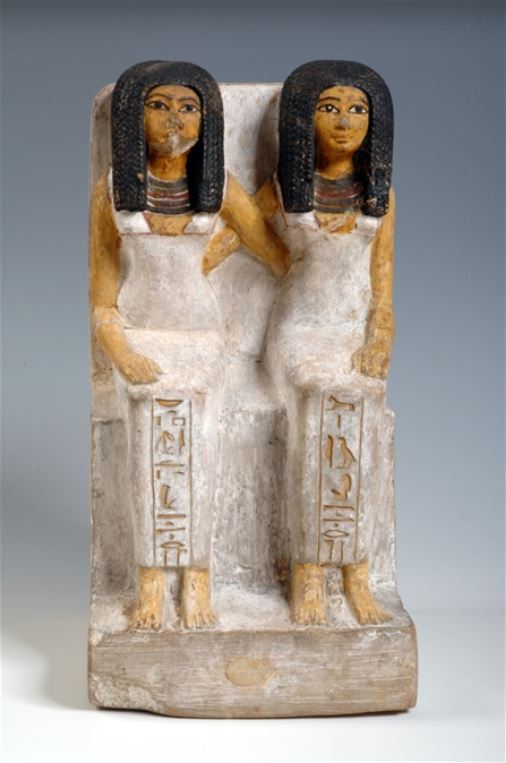
Statue of Idet and Ruiu (1480–1390 BC) The two women are depicted in a form typical to married couples. Idet is given priority by the artist who placed her on the right, and is given the title "Lady of the House".
#art#art history#lesbian#lesbian art#wlw#women#sculpture#limestone#fine art#ancient egypt#antiquity#female homosexuality
3K notes
·
View notes
Text

Minoan lady with a snake no correlation to the snake goddess at all
#my art#minoan crete#minoan#ancient greece#ancient crete#ancient history#history fanart#historical art#historical oc#im realizing a pattern of me drawing minoan women with trees
395 notes
·
View notes
Text

#art history#art#archeology#goddess#goddess art#divine feminine#scuplture#goddess worship#sacred feminine#ancient#ancient art#ancient history#history#historical art#women in art#goddess statue#history lovers#history of art
153 notes
·
View notes
Text






asterix & obelix: mission cleopatra (2002) - a salute to women
#asterix & obelix mission cleopatra#asterix & obelix mission cléopâtre#noemie lenoir#fatou n'diaye#cleopatra#guimieukis#exlibris#monica bellucci#alain chabat#ancient egypt#movie gifs#fav movies#french movie#egypt#egyptian#film edit#women#women in history#comfort films#asterix & obelix: mission cleopatra#asterix and obelix: mission cleopatra#asterix & obelix: mission cléopâtre#asterix and obelix: mission cléopâtre
512 notes
·
View notes
Text

Book review: Goddesses, Whores, Wives & Slaves by Sarah B Pomeroy (1975)
10/10
This was impossible to put down. A fascinating and vibrant history of Ancient Greek and Roman Women: from all walks of life, using just about every resource available within art and archaeology and anthropology.
It’s also also very very well researched and informative with a HUGE bibliography and a great index and lots of notes for the nerdy (aka me) who has already highlighted the next set of books to chew on.
Overall she argues (and does so persuasively with a great deal of thought and objectivity) that Roman women seemed to have enjoyed a higher quality of life than the Ancient Greek women because of generally (especially in upper class households) having a more public-facing life, being slightly more protected by the pater familias model of the Roman household, and having slightly more social mobility.
However a shout out goes to the Amazons and their social model for living 🏹🏹🏹
If you’re curious about the roles of women in varying Hellenistic and classical contexts, this is a must-read.
Her final words are so interesting and prescient too: “Serious intellectual thought about women continued: Stoicism, the most popular of the Hellenistic and Roman philosophies, directed women’s energies to marriage and motherhood. The argumentation is brilliant and difficult to refute. And this rationalized confinement of women to the domestic sphere, as well as the systemization of anti-female thought by poets and philosophers, are two of the most devastating creations in the classical legacy” 😢💔
Also, if you’re upset by reading about things like sexual slavery and infanticide, it might not be the book for you.
Overall, it’s staying in my collection and I’ll definitely be referring to it again.
#feminism#terfblr#radical feminist safe#radical feminist#andrea dworkin#radical feminism#book review#book recommendations#feminist books#feminist book review#history#ancient history#women’s history
401 notes
·
View notes
Text
Which Underrated Woman from History are You?
Finally got around to making a uquiz featuring six of my favourite women from history! You can either get someone from the French Revolution, Roman Republic (I know, how unexpected!) or from 1700s/early 1800s.
Featuring scientists, writers, politically active icons and a few poets whose lives were intertwined with theirs, as a treat!
Enjoy and thanks everyone for sharing! ✨
#frev#french revolution#ancient rome#roman republic#history#tagamemnon#uquiz#tumblr quiz#which are you?#age of enlightenment#1700s#1800s#romantic era#18th century#19th century#émilie du châtelet#fulvia#clodia#mary shelley#ada lovelace#lord byron#literature#women's history#uquiz link#personality quiz#quiz tag#percy bysshe shelley#lucile desmoulins#camille desmoulins#catullus
290 notes
·
View notes
Text

Diana of Versailles (Artemis of the Hunt), 1st or 2nd century AD. Musée du Louvre.
#art#aesthetic#art history#historical fashion#fashion#historical art#women in art#women#Ancient Greece#Ancient Rome#antiquity#Greek gods#Diana#artemis#statues#the louvre#museum#sculpture#Ancient Greek aesthetic#antiquity aesthetic#ancient Roman aesthetic#Greek art#Roman art
138 notes
·
View notes
Text
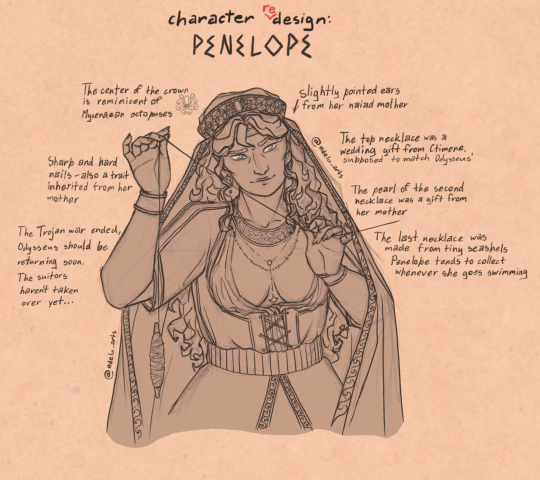
Really happy with how she turned out! I decided to give her some naiad features, inspired by this post and it was really fun! I hc that she can breathe underwater (even though she doesn't have gills. Do naiads have gills?), although I am not sure if she can do it freely or for a limited amount of time 🤔
The fabric piece covering her chest was loosely inspired by 18th century neckerchiefs, because I wasn't sure how the Mycenaean open chest fashion would fly with the censorship here or on other platforms ¯\_(• ▽ •;)_/¯
#I can leave comments and reblog posts again#yay#the odyssey#tagamemnon#penelope#character design#my art tag#I hc that she took over Odysseus' duties while he was away and got to be a reigning queen for about 10-13 years#until the suitors took over. It's a pretty long rant and I can't fit it into tags#this is her design before that#her being a ruler wouldn't really have been possible by Homer's time because of how the ancient Greece treated women#but since the story was set in Mycenaean Greece... maybe? Just maybe she could have enough authority for the assembly to take her seriously#epic the musical#epic the musical fanart#greek mythology#maybe this hc would change as I learn more things about history#but for now it's here ¯\_(ツ)_/¯
494 notes
·
View notes
Text




Lvcilla
#gladiator#lucilla#connie nielsen#gladiatoredit#perioddramaedit#historyedit#movieedit#moviegifs#filmedit#filmgifs#ancient rome#gif#*#g#women in history
492 notes
·
View notes
Text
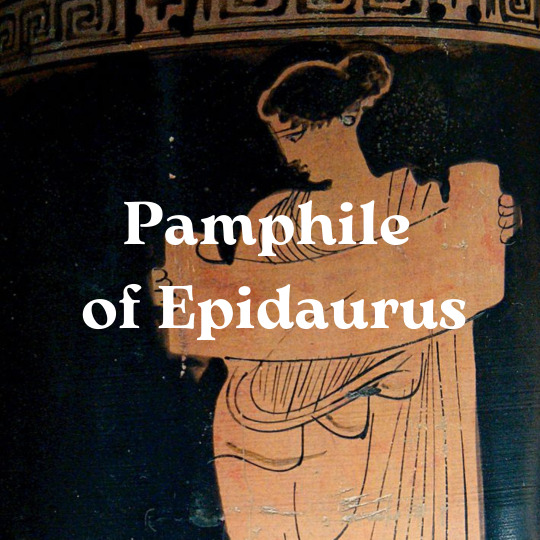
Although most of her writings did not survive, Pamphile (or Pamphila) of Epidaurus (fl. mid-1st century CE) deserves recognition. She is one of the earliest known female historians and the only ancient Greek woman historian about whom we have significant information. Additionally, she was a key figure in developing the genre of “miscellaneous history,” where authors retold anecdotes from earlier works.
A pioneer of historical writing
Pamphile stands among the earliest known female historians, alongside the Chinese scholar Ban Zhao (c. 40–45 – c. 117���120). This does not mean, however, that she was the first or only female historian of her time. For instance, there are references to a woman named Nicobule, who reportedly wrote a biography of Alexander the Great between the 1st and 3rd centuries CE.
According to Photios, Pamphile was a mature woman during the reign of Nero (54–68 CE). Conflicting accounts exist regarding her origins: Photios claimed she and her family were from Egypt, while the Suda, a Byzantine encyclopedia, stated that she and her father, Soterides, were from Epidaurus.
Pamphile was a polymath, likely with access to an extensive library. She attributed her knowledge to her own readings, her husband and the conversations she overheard from his visitors.
Pamphile’s Work and Influence
Pamphile’s main work, Historical Commentaries, survives only in fragments—eleven excerpts from the original 33 books, preserved in paraphrases by authors like Diogenes Laërtius, Aulus Gellius, and Photios. Her Historical Commentaries is considered the earliest known example of “miscellaneous history”. Later writers seem to have emulated her work and style.
In addition to this, Pamphile is credited with other works, including a collection of apophthegms, lectures, debates, and discussions on poetry. She also wrote an epitome of Ctesias in three books. According to the Suda, she authored a work titled On Controversies and a sexual manual called On Sexual Pleasure.
Deborah Levine Gera speculates that Pamphile might also be the author of Tractatus de Mulieribus Claris in Bello (Treatise on Women Distinguished in Wars), which recounts the deeds of powerful women from history, such as Tomyris and Artemisia I of Caria.
Pamphile described her work as poikilia, meaning a “tapestry” woven together from various sources and genres. She chose this approach to make her writing more engaging and enjoyable for her readers.
Enjoyed this post? You can support me on Ko-fi!
Further reading
Anonymous, Tractatus de Mulieribus Claris in Bello
MacDaniel Spencer, Pamphile of Epidauros: A Female Ancient Greek Historian
Plant Ian Michael (ed.), Women Writers of Ancient Greece and Rome : An Anthology
Photios, Bibliotheca
#history#women in history#women's history#historyedit#pamphile of epidaurus#1st century#female writers#greece#ancient greece#greek history#antiquity#ancient history#feminism#nicobule#herstory
85 notes
·
View notes
Text

#black history#african history#ancient egypt#egyptian#africa#black women#black people#african culture#blacklivesmatter#black lives matter#black excellence#nefertiti#african royalty#Afrika#michaela coel
175 notes
·
View notes
Text


Finals took me out for a bit, but I’m back, and I finally finished!!! Here’s Cleopatra and Livia in all their glory :)
Should I make one of Mark Antony and Octavian next??
Parallel Lives
To me, Cleopatra VII and Livia Drusilla are two sides of the same coin. They were born exactly ten years apart (Cleopatra in 69 BCE and Livia in 59 BCE), and were the female rulers of two of the most prominent Mediterranean powers of their time. Their families were deeply entwined: Julius Caesar was the father of Cleopatra’s son and Livia’s (adopted) father-in-law; Mark Antony was Livia’s brother-in-law through his marriage to Octavia; when Augustus conquered Egypt, he had Cesarion killed because he was a threat to Augustus’s apparent right to rule.
Both women grew up in a time of civil war and ended up on opposite sides of their families. Cleopatra openly fought her brother Ptolemy XIII and her sister Arinoe VI. Livia’s father and brother died fighting for Brutus and Cassius at Philippi. Her first husband sided with Fulvia and Lucius Antonius when they fought Augustus.
Both of them have been misrepresented by ancient sources and modern media.
Augustus’s propaganda hinged on the presentation of himself as a proper and modest Roman returning to tradition after so much civil war (other than the autocratic ruling ofc). He presented Livia as the ideal and perfect Roman matron, chaste, modest, and pious. He presented Cleopatra as the opposite. She represented the extravagance and backwardness of foreign monarchs. Augustus presented her as domineering over Antony, a reversal of the proper order (his slander of her was largely slander of Antony after all). And although Augustus publicly looked down on Egypt, he adopted many elements of Egyptian monarchy into his dynasty, such as the association of monarchs with gods—as Livia was associated with Ceres, Magna Mater, and Venus, Cleopatra mostly associated herself with Isis (who shares an origin with Venus).
Both were accused by historians of poisoning family members—Cleopatra her brother Ptolemy XIV among others, and Livia Augustus as well as a number of his heirs.
In modern media, Cleopatra is often seen as an over-sexualized seductress, Livia as a conniving and manipulative wife and mother.
Whether or not they did any poisoning, they were both incredibly intelligent and fascinating women and I love both of them a lot.
There are some of motifs in the drawing I want to point out:
- Cleopatra is wearing an Isis knot (the top layer of her dress), a common feature found in depictions of Ptolemaic queens that associates them with the goddess Isis
- She is also wearing a simple cloth diadem as often seen in depictions of Alexander the Great and all the dynasties that emulated him. It’s often seen in Cleopatra VII’s coinage
- She has the melon hairstyle, which she is seen with on coinage and in Roman sculpture. Apparently she popularized it among Roman women when she visited the city!
- Her snake bracelet and bull earrings are also common Ptolemaic motifs
- Livia is dressed like a proper Roman matron in her palla, stola, and tunica. The lack of jewelry is meant to show her modesty as well. Augustus and Livia went out of their way to present as a normal senatorial class couple rather than opulent foreign monarchs
- Her hair is in the iconic nodus style, as seen on basically all her statuary as well as that of other women in Augustus’s household such as Octavia
- Both Livia and Cleopatra are depicted holding cornucopias in their statuary. It associates them with fertility, wealth, and number of mother-goddesses. Pomegranates are a symbol of Juno and Proserpina, wheat and poppy sheafs are associated with Ceres. Wheat is also important because it was a resource Egyptian had in abundance and that Rome was desperate for. A lot of the politics between the two nations were based around that trade.
- And figs. Well, there are a lot of stories that get told about Cleopatra and Livia, many of which paint them with misogynistic stereotypes. Cleopatra’s death has long been the subject of speculation and fantasy. Shakespeare writes that she snuck the snakes she used to commit suicide past the Augustus’s men in a basket of figs. Livia has often been implicated in Augustus’s death. A popular version of that being that she poisoned him with figs. These two women are connected by the imagery and symbolism of the fruit: femininity and fertility, poison and death.
#classicsblr#tagamemnon#augustus#livia drusilla#cleopatra#cleopatra vii#artists on tumblr#my art#digital art#ancient rome#ancient egypt#digital illustration#history#women
57 notes
·
View notes